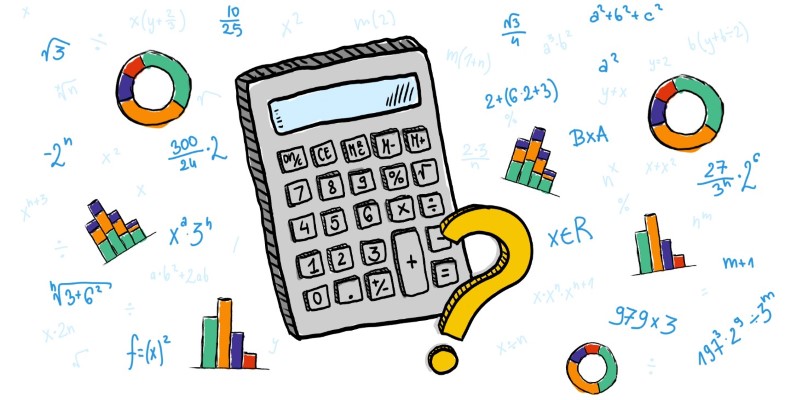In the world of statistics, variance and covariance are foundational concepts used to understand data variability and relationships between variables. Both metrics offer insights into data but serve different purposes.

Variance measures how much a single variable deviates from its mean, while covariance assesses how two variables change together. Grasping the nuances between these two can significantly enhance your ability to analyze and interpret data effectively.
What is Variance?
Variance is a measure of the spread or dispersion of a set of values. In simple terms, it tells us how much the values in a dataset differ from the mean (average) of that dataset. To calculate variance, you take the differences between each value and the mean, square these differences, and then average them.
For example, if you have test scores for a class and want to understand how varied those scores are, variance will provide a numerical value that represents this spread. A high variance indicates that the scores are spread out from the mean, while a low variance suggests that the scores are close to the mean.
Pros of Variance
Variance offers several benefits in data analysis. Primarily, it provides a clear measure of the spread or dispersion within a dataset, which helps in understanding how individual data points differ from the mean. This is crucial for identifying the degree of variability and inconsistency in data. For example, in finance, a high variance in stock prices can indicate higher risk, while a low variance suggests stability. Additionally, variance is foundational in many statistical methods and models, including regression analysis and hypothesis testing, making it a valuable tool for data scientists and researchers. Its ability to quantify variability aids in making informed decisions based on data distribution.
Cons of Variance
However, variance has its drawbacks. Since it involves squaring the differences from the mean, it can be influenced by outliers or extreme values, which may skew the results. Also, the unit of variance is the square of the unit of the original data, which can make it less intuitive. For instance, if you're working with data in meters, the variance will be in square meters, which might not be as immediately meaningful.
What is Covariance?
Covariance measures how two variables change together. It indicates whether an increase in one variable corresponds to an increase or decrease in another variable. Unlike variance, which looks at a single variable, covariance considers the relationship between two variables.

To calculate covariance, you first find the deviations of each variable from their means. Then, you multiply these deviations for corresponding pairs of values and average the results. If the covariance is positive, it means that as one variable increases, the other tends to increase as well. Conversely, a negative covariance suggests that as one variable increases, the other tends to decrease.
Pros of Covariance
Covariance is particularly useful for understanding relationships between variables. In finance, it can help in portfolio diversification by analyzing how different assets move together. This insight allows investors to make informed decisions about combining assets to reduce risk.
Cons of Covariance
The main limitation of covariance is that its magnitude is not standardized, which makes it challenging to interpret on its own. The value of covariance depends on the units of the variables, which can make comparisons between different datasets difficult. Additionally, unlike correlation, covariance does not provide a measure of the strength of the relationship between variables; it only indicates the direction.
Key Differences: Variance vs. Covariance
Variance and covariance are crucial statistical tools, but they serve different purposes:
Focus of Measurement
Variance measures the spread of a single variable's values from its mean. It shows how much data points differ from the average. For example, it reveals how varied test scores are around the average score.
Covariance, however, measures how two variables change together. It shows if an increase in one variable corresponds to an increase or decrease in another. For instance, it can indicate if more study time leads to higher test scores.
Calculation
Variance is found by averaging the squared differences between each data point and the mean. This squaring ensures that all deviations contribute positively to the variance.

Covariance is calculated by averaging the products of deviations of two variables from their means. It involves multiplying the deviations of one variable by those of another and then averaging these products.
Units of Measurement
Variance has units squared, which can make interpretation less straightforward. For example, if the data is in meters, variance will be in square meters.
Covariance has units that are the product of the units of the two variables being compared, making it less intuitive. For example, if comparing meters and seconds, covariance will be in meter-seconds.
Interpretation
Variance indicates how much a single dataset varies. A high variance means data points are widely spread from the mean, while a low variance means they are clustered around the mean.
Covariance shows the direction of the relationship between two variables. A positive covariance indicates that as one variable increases, the other tends to increase as well. A negative covariance means one variable increases while the other decreases. It does not measure the strength of the relationship without further analysis, such as calculating correlation.
Use Cases
Variance is useful for understanding the spread within a single dataset. It is often used in finance to assess risk or in quality control.
Covariance helps us understand how two variables interact, which is useful in portfolio management and other fields where relationships between variables are analyzed.
Conclusion
Understanding the differences between variance and covariance is crucial for anyone involved in data analysis. Variance provides insights into the variability within a single dataset, while covariance offers a glimpse into how two datasets move in relation to each other. Both concepts are essential for various statistical applications, from risk assessment in finance to predictive modeling in machine learning. By grasping these concepts, you can enhance your ability to analyze data and make informed decisions based on statistical evidence.




